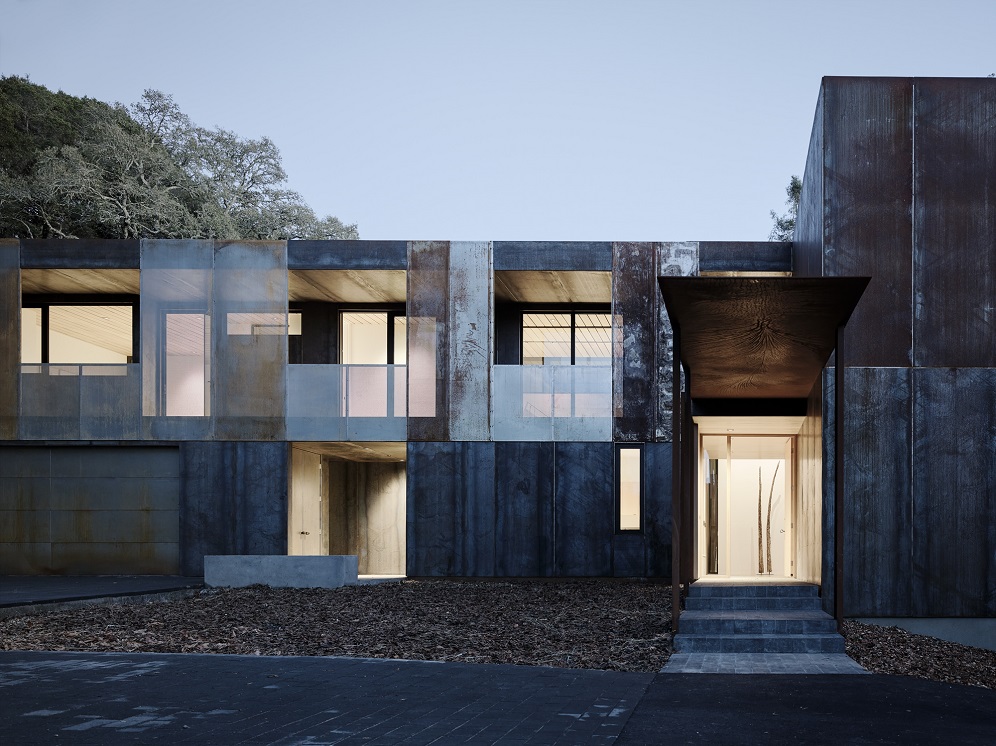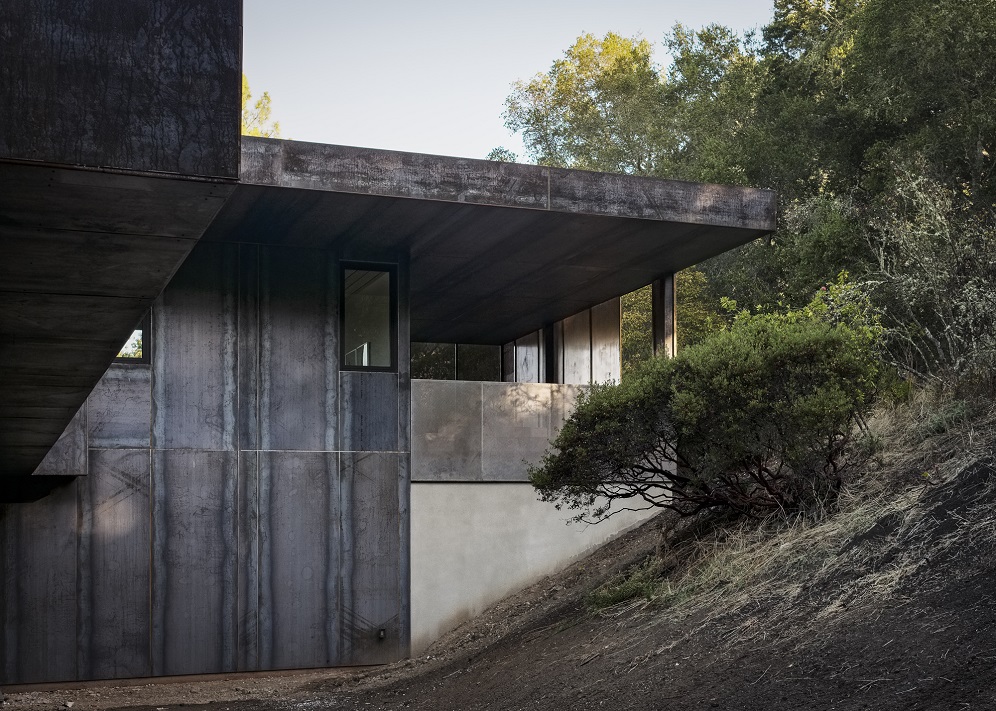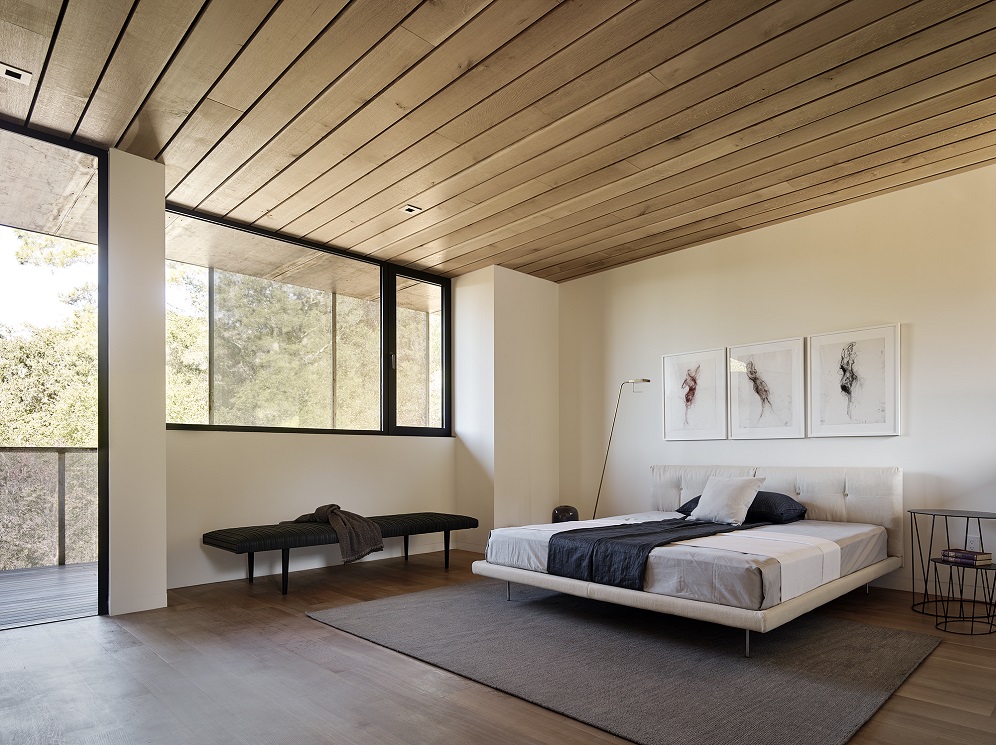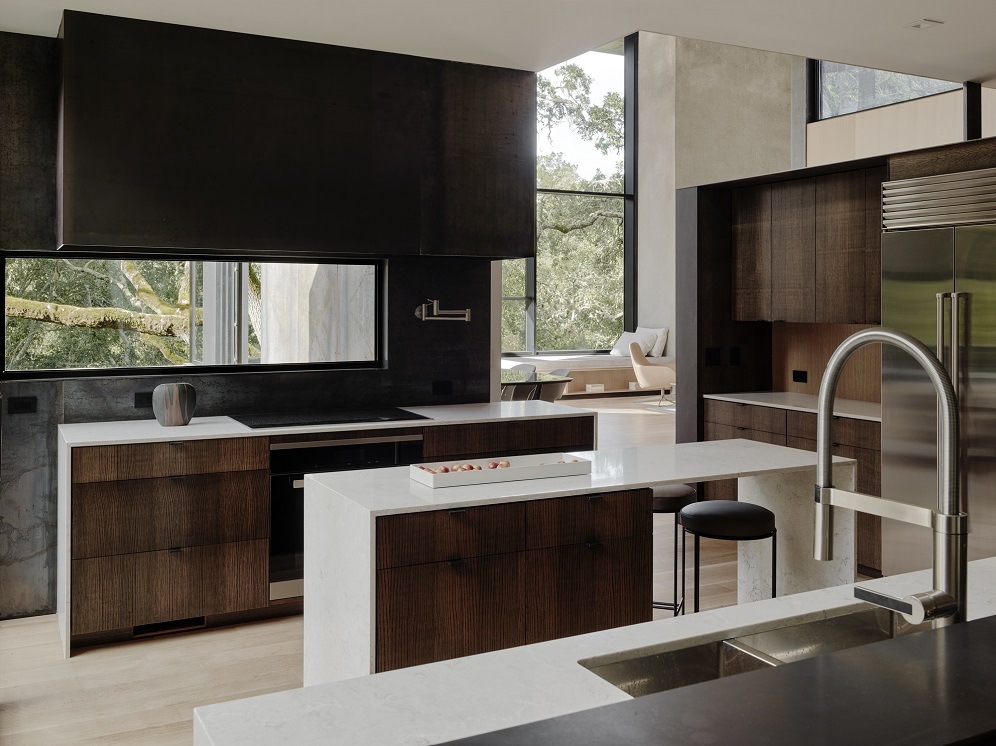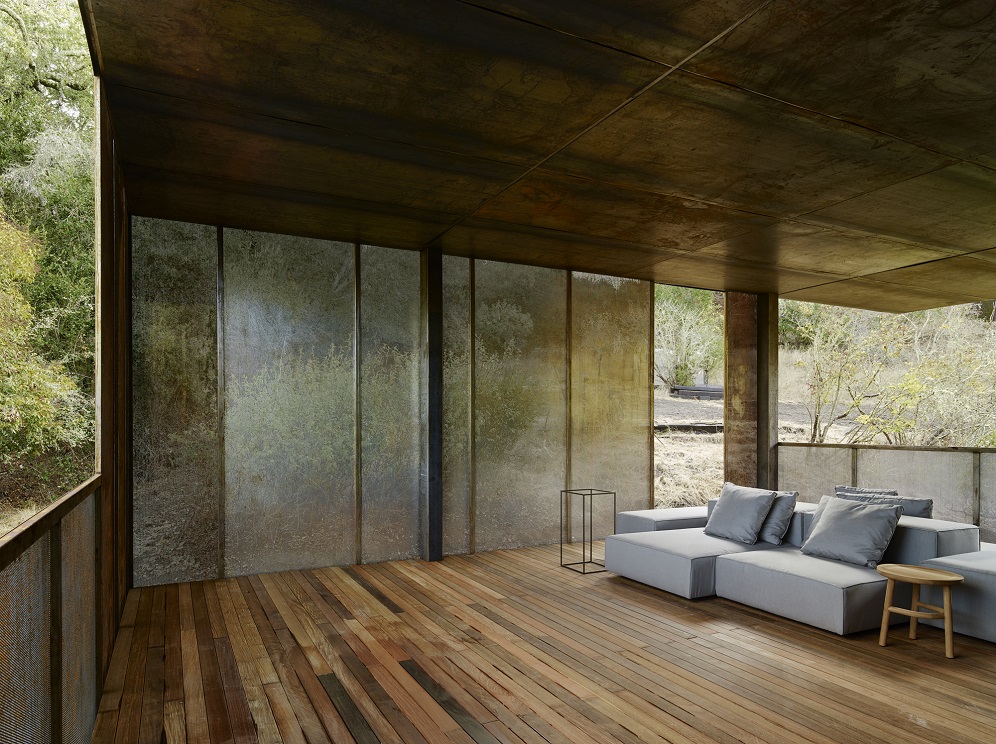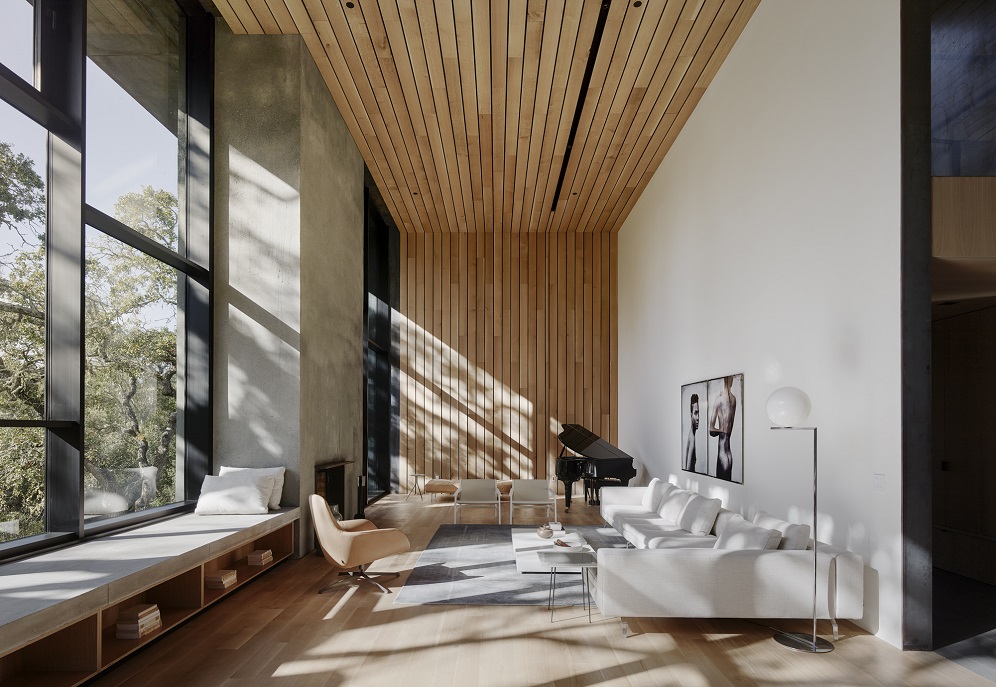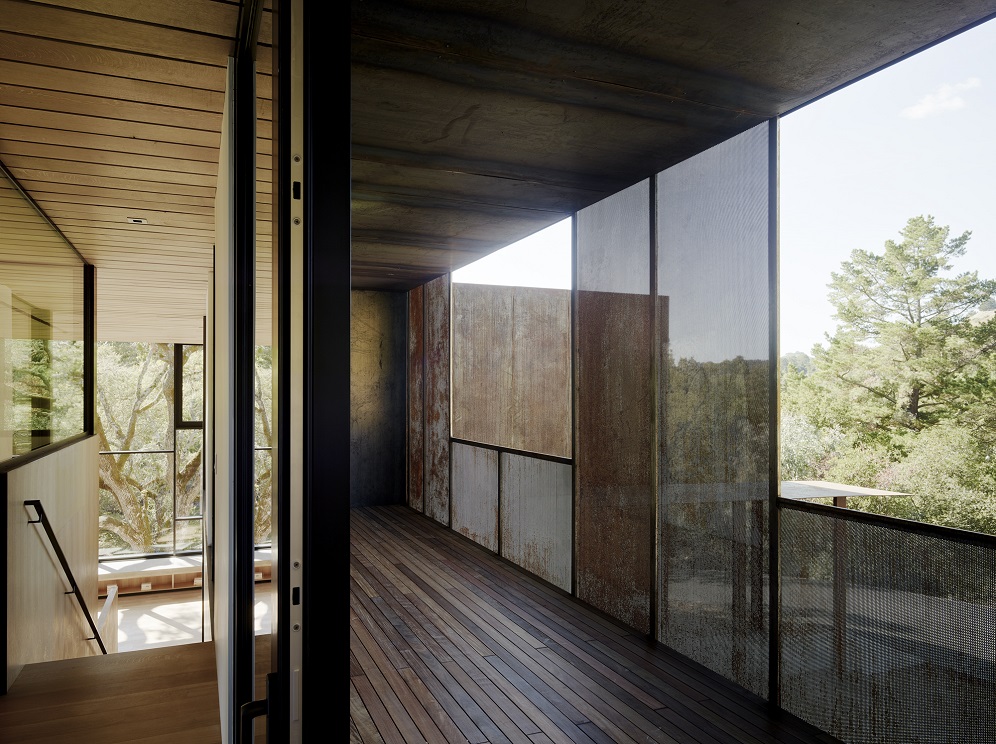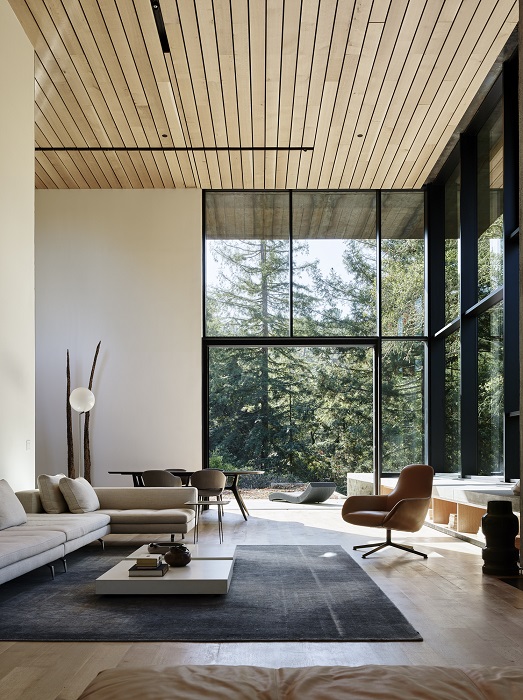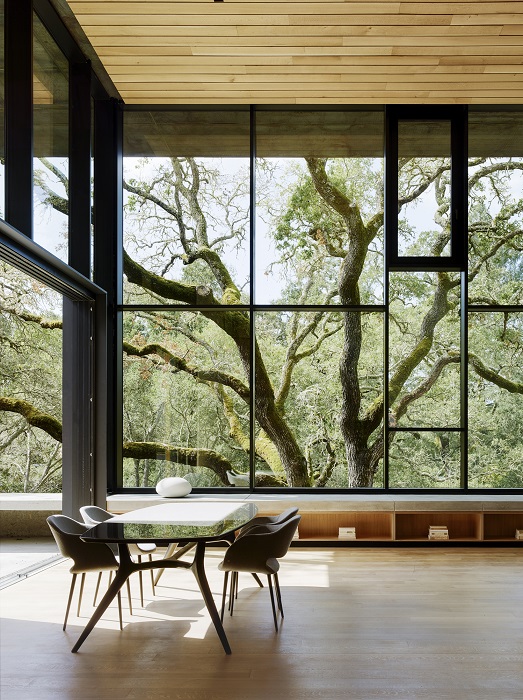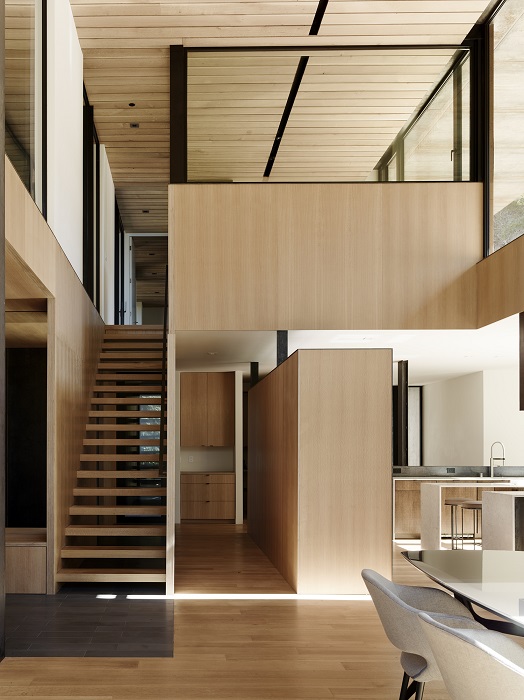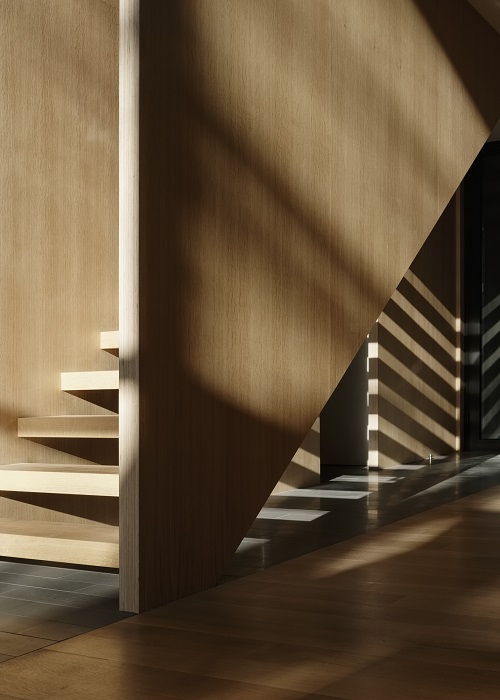Corten rain screens for California residence
California-based Faulkner Architects and DZINE Concept has designed the Miner Road House, which is to construct a net zero energy and sustainable home for a family of environmental scientists and their sons.
The three-bedroom residence measuring 3,725 sq. m. was remodeled from a 1954 ranch house at the foothills next to a seasonal creek. The existing footprint was reused under the shade of a Valley Oak tree, and the fireplace – wrapped in concrete and utilized for structural support – is the only surviving portion of the original house.
The entry is through a steel plate-covered walkway leading to the front door on the south, to be greeted by 20-ft. ceilings, and floor-to-ceiling glazing. A 12-ft-wide retractable glass wall opens up the patio and adjoining garden, part of an open-living layout desired by the family. Secondary bedrooms are located along an extendable hallway, along with an outdoor dining area sandwiched between the family room and kitchen. A mezzanine features a master bedroom and study stacked above the kitchen and nook. A screened pacing deck shades the upper level from the harsh afternoon summer sun.
Corten steel rain screens are used for the exterior skin, while wood ensures zero-annual maintenance costs and a shotcrete foundation allows the formwork to be repurposed for wood framing. Single-use materials such as the Corten steel and shotcrete foundation reduced complex detailing and labor costs, which allowed the budget to be reallocated for upgraded mechanical, insulation and glazing systems. Interior finishes produce acoustically-detailed, unfinished oak ceilings and walls.
The 14-gauge Corten rain screen provides a no-maintenance skin, and an 8.1kW photovoltaic system provides for renewable energy. High levels of insulation and glazing reduced heating and cooling loads, while rooftop rainwater is collected as a waterfall at the end of the hallway. Buried tanks store water for toilets and laundry, and grey water collected separately is reused for irrigation. Electronically-commutated motors and variable speed heat pumps further conserve energy use and control cooling and heating. An energy recovery ventilator provides fresh air.


